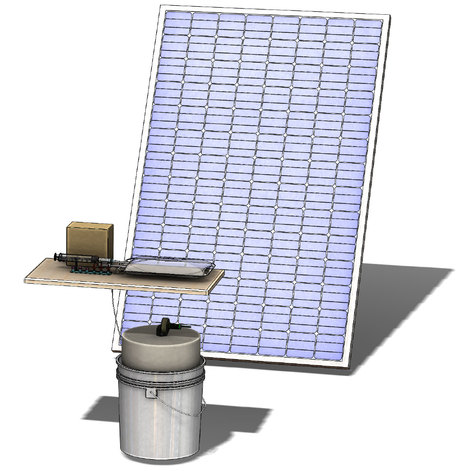Accessible dialysis for World Kidney Day

Less than a third of patients who would benefit from dialysis are currently receiving any kind of renal replacement therapy, with one of the greatest hurdles being a lack of sterile water.
Recognising this challenge, a manufacturing engineer from the Isle of Man has designed a portable, solar-powered dialysis system that fits in a suitcase, winning the US$100,000 Affordable Dialysis Prize in time for World Kidney Day yesterday.
The Farrell Family Foundation supported the prize, which had four primary requirements: it had to be solar powered, able to use any water source, have low running costs and come with a price tag of less than $1000 per unit. The competition was announced a year ago as a joint effort between the Asia Pacific Society of Nephrology, the International Society for Nephrology and the George Institute for Global Health.
The winning design was submitted by Vincent Garvey, who had no previous experience with kidney disease or dialysis but was inspired by the opportunity to put his engineering skills towards a project with the potential to save millions of lives annually. “The statistics are pretty chilling... there are millions of people who don’t have access to dialysis and currently suffer pretty awful deaths,” Garvey said.
Research published in The Lancet estimates that over 9 million people worldwide are in need of dialysis but only 2.61 million are actually receiving it, even though the treatment has been around for over 50 years. The problem is that conventional dialysis systems are cumbersome and prohibitively expensive, meaning that patients in rural areas and developing nations are unlikely to have easy access.
Garvey’s design could change that. Professor Vlado Perkovic of The George Institute for Global Health said, “It’s been a long time coming, but this invention just might be the radical overhaul we’ve all been hoping and waiting for.”
The judging panel for the award comprised nine global dialysis experts from Australia, Belgium, India and the UK. Their decision was unanimous in awarding the prize to Garvey’s innovative design and work has already begun on building a prototype.
On receiving the award, Garvey said: “I have always loved a challenge, and the idea of solving this problem excited me from the start. It’s incredible to win this prize, but I am already focused on building the team to tackle the challenges ahead.”
How librarians can help maintain image integrity
By sharing best practice and providing useful resources, librarians can support researchers in...
Winners announced for 2025 Australian Museum Eureka Prizes
Now in their 35th year, the Australian Museum Eureka Prizes continue to highlight some of the...
"Damning" review of Forensic Science Queensland released
The review of the troubled forensic service provider reveals unreliable results,...




